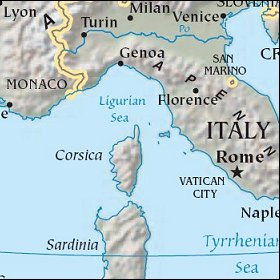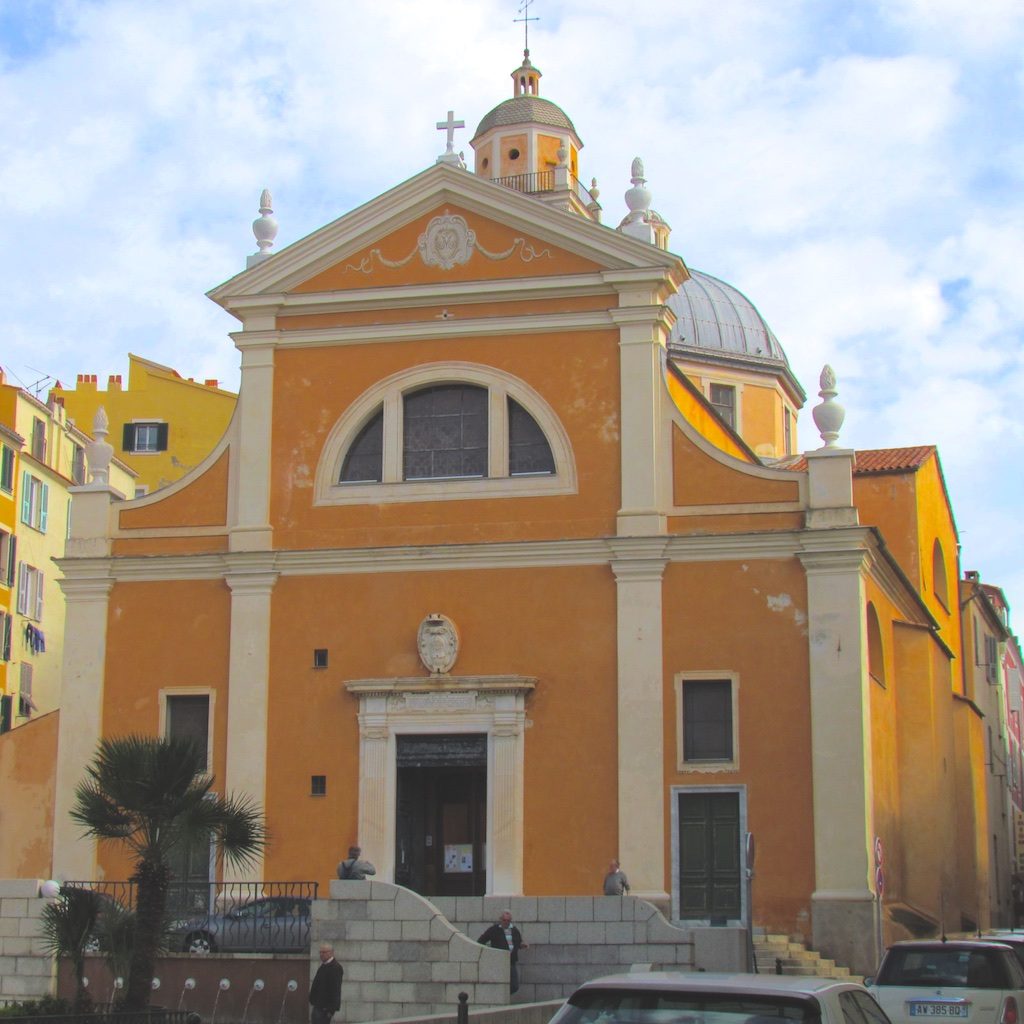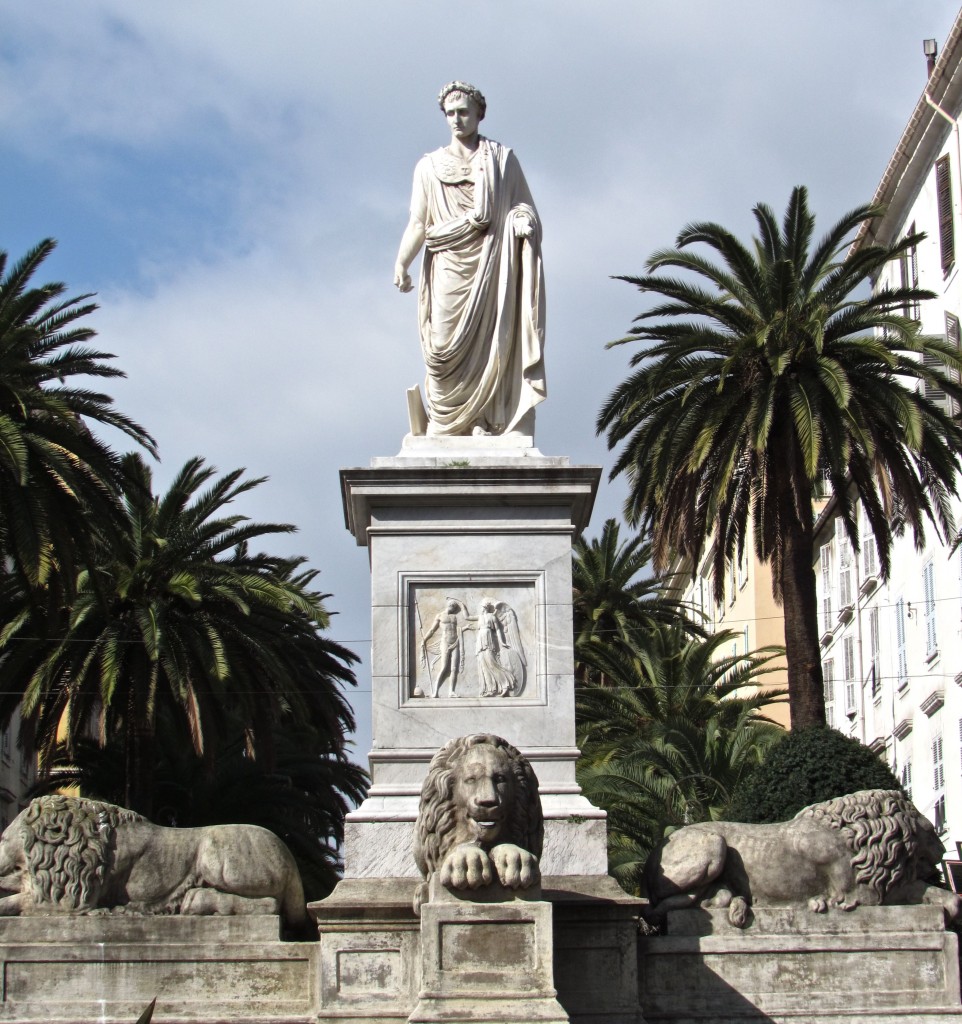“Finding Napoleon” requires tracing his roots to Corsica. Let’s start with a video tour of the sites and a bit of geography.

Corsica—an island of 8,700 square miles—is essentially a mountain ridge that descends into the Mediterranean Sea. In the geological past, its land mass separated from what is now southern France.
It’s located 100 miles from the French coast and 50 miles from Italy. During recent millenia, that strategic position led to its repeated conquest, starting with the Phoenicians in 565 BCE. Romans, Vandals, Ostrogoths, Byzantines, Saracens, Barbary pirates, Greeks, and various Italians followed. In 1284 AD, the city state of Pisa lost it to the Republic of Genoa. The Genoese held it for almost 400 years. That brings us to Napoleon.
Napoleon, Born a Frenchman
In a twist of history, one year before Napoleon’s birth, the Treaty of Versailles of 1768 ended four hundred years of Genoese rule. As part of that agreement, Genoa transferred Corsica to France.

Thus, with the thinnest of margins, Napoleone Buonaparte was born a French citizen on August 15, 1769. His uneducated, pretty mother Letizia came from a Corsican family with enough money to attract the well-educated but poorer Carlo Buonaparte.
They were a middle class couple with a house in Ajaccio, a summer country home with olive groves, and money to buy books. Two years after Napoleon’s birth, Carlo proved his ancestral links to noble Italian families. That turned Napoleone Buonaparte into Napoleone de Buonaparte, a member of the minor nobility.
In 1778, his family sent their nine-year-old Italian-speaking boy to France to attend military school. Although he learned French quickly, Napoleone (as he was still called) was mocked for his accent, for his poverty, for being a scholarship student, and for his seriousness. But, if you believe the stories, he became a leader despite all obstacles.
Eight years later, when he returned home for the first time, he was a French-speaking officer in the French army. He had to reacquaint himself not only with his family, but with the Italian and Corsican spoken in his hometown of Ajaccio.
Napoleon’s Return to Corsica
As a young officer, he spent an inordinate amount of time on leave in Corsica. (At one point, he almost lost his commission on grounds of desertion for not returning to the mainland.) For a while, he and his brother Joseph dabbled in Corsican politics—a situation that resulted in the family Buonaparte fleeing the island with only the clothes on their backs.
In 1793, the Corsican assembly banned the Buonapartes’ return to the island. Nonetheless, in 1799, Napoleon came home one more time. By then, he was a wildly popular French general, returning to France from his Egyptian Campaign. The Corsicans gave him a hero’s welcome.
Finding Napoleon on Corsica now

Corsica now claims him as a favorite son, or at least a tourist attraction. You can visit the Bonapartes’ restored family home, their summer house with its olive groves, the church where Napoleon was baptized, the beach he and his brother Joseph ran along, the cave where he hid when he skipped school, and the citadel where he met French soldiers for the first time. Everywhere there are statues and museums.
To read more about Corsica’s influence on Napoleon Bonaparte, check out my posts under the category of Corsica.

Has anyone created a google maps layer of Napoleonic interest in Paris showing locations of historical events and residences of family and associates of Napoleon? I’ve been to France several times and each time I spend hours trying to locate sites that for Napoleon enthusiasts, are both fascinating and touching. I’ve found it quite difficult to find accurate locations other than the major events. I’m going back to Paris in 2 weeks and I’ve started marking locations on google maps, but I’m having trouble relocating gps information I had collected on where buildings were before being torn down. It would’ be incredible to walk through Paris thinking Napoleon did this here… his brother lived here… so and so was shot here. If anyone is interested and has tidbits of info, I’d love to help create a map layer and post it for public use.
Great idea, Vincent! I suggest you go to the Napoleonic Historical Society Facebook page. Join the group and if you possible the society itself. You’re bound to find supporters for this terrific endeavor.
Thanks for posting,
Margaret
Pingback: WELCOME! - Margaret Rodenberg
Pingback: FINDING NAPOLEON: A Novel - Margaret Rodenberg
Pingback: FINDING NAPOLEON EXPLAINED - Margaret Rodenberg
kilometres not miles!
Hello, Simon! Thank you for your comment. The distances here are correct for miles, but not for kilometers. Most of my readers are Americans, but I think you are right that in the future I should state both as in “100 miles (161 kilometers).”
Margaret
Would you recommend any particular tour in Corsica to visit Napoleonic places of interest or simply do it oneself? I would imagine Ajaccio is a big town but is it the place to stay or is there somewhere one should stay that is in a beautiful location?